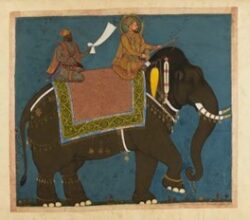
Elephants, Gods, and Kings of India Claim a Corner of the Metropolitan Museum of Art
AR Hoffman | The New York Sun | 8th February 2024
Hodgkin, the acclaimed abstract British artist, assembled a world class collection of Indian court paintings. Specialists delight in their portrayal of the subtleties of Indian life in the Mughal court, painted around the same time Vermeer was active. They are products of “one of the world’s great pictorial traditions”. And for non-specialist viewers? Well, there are the elephants. They are spectacular, “painted with the nuances that Europeans applied to ladies and landscapes”. Images are here.




